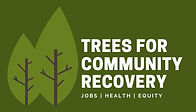
Since communities of color and other underserved communities typically have far fewer trees, at Trees for Community Recovery, we strongly believe that we need to prioritize both planting and protection actions in these areas first. In a riveting piece, National Geographic explains how these inequities came to be and highlights the positive work communities are doing to undo the effects of past harmful policy decisions:
Trees are more than just beautiful fixtures of any city neighborhood. They make hot summer days more bearable by providing shade and naturally cooling air temperatures in the immediate surroundings. However, researchers have found a distinct and historical connection between tree canopy disparity in wealthy, mostly white neighborhoods and low-income, often minority communities. It dates back to a 1930s discriminatory housing practice called redlining.
Under a New Deal program, maps of over 200 American cities were created to determine which residential areas were creditworthy to receive federal loans. The grading system heavily disadvantaged people of color, immigrants, and low-income families, making it hard to obtain funds for mortgages and to build and maintain parks or other tree-covered urban spaces. More than 50 years after the practice was banned by the Fair Housing Act of 1968, the sweltering effects continue to be felt in formerly redlined areas that still have fewer trees to keep neighborhoods cool...Read more.

Comments